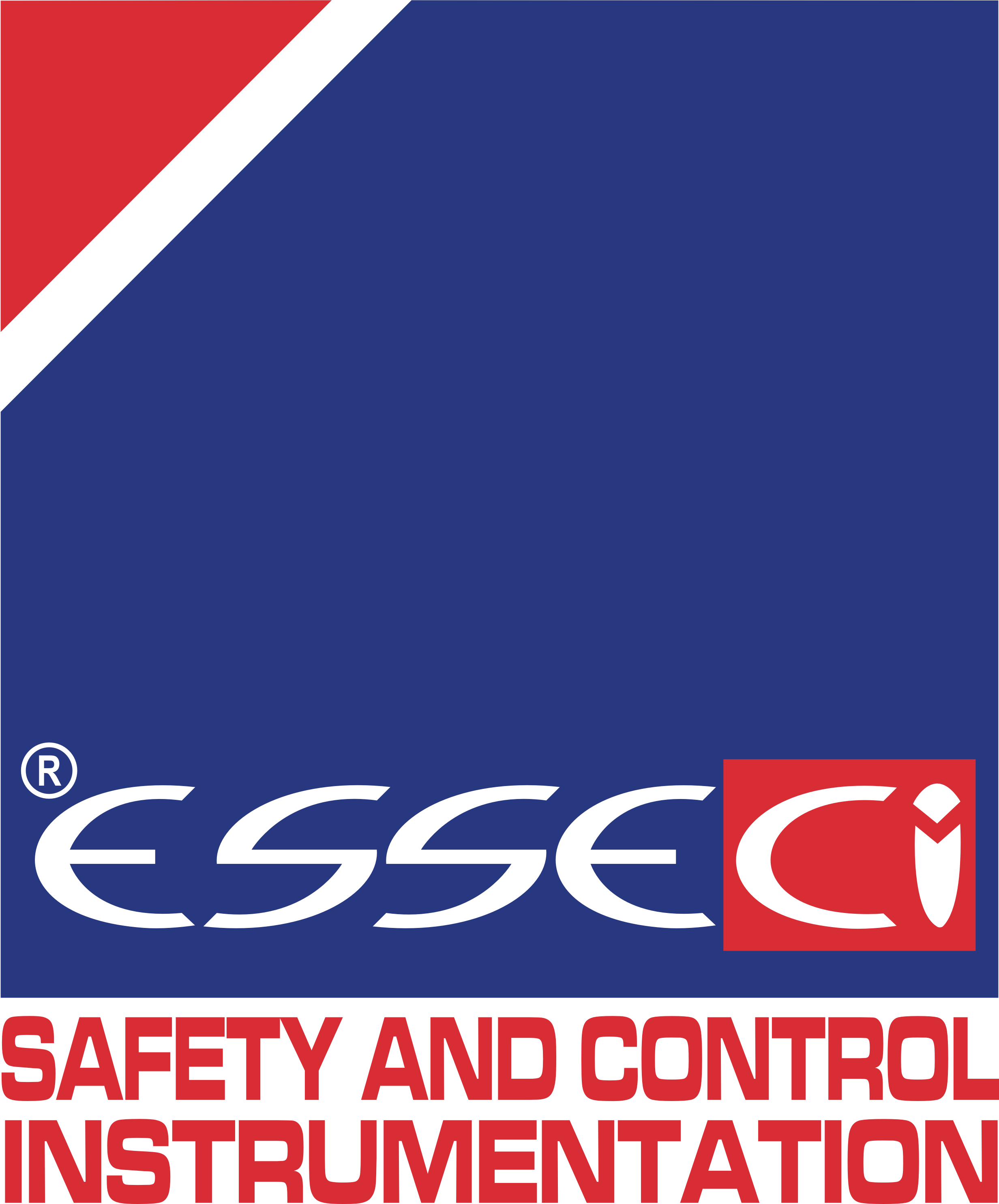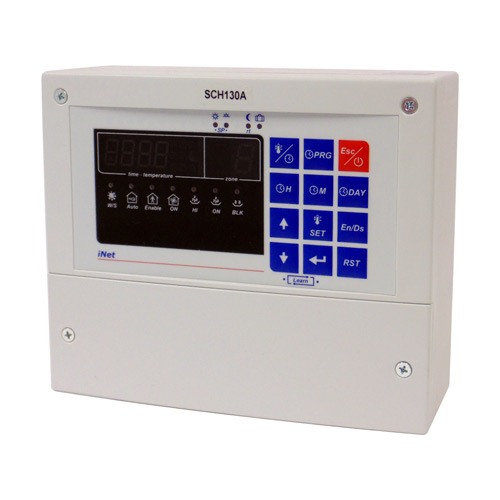Chrono-thermostats for the control of up to 4 heating areas, each of them with room probe and daily / weekly setting. The system is made of a serial master terminal, which controls one or more serial slave modules.
SERIAL MASTER TERMINAL:
The serial master terminal features a large LED display, which ensures an easy viewing. Device and whole network setup is quick and intuitive.
To setup and monitor the entire network by PC and software EYELAN, you just need to replace the serial master terminal SCH13x with the control unit SCQ65 and connect it to the serial mater terminal SCM850.
Housing: panel or wall mounted.
Application: standard / aerated, single/multi-stage gas fired burners.
Versions:
- SCH130A: 1 heating zone, 16 power modules;
- SCH131A: 2 heating zones, 16 power modules;
- SCH132A: 3 heating zones, 16 power modules;
- SCH133A: 4 heating zones, 16 power modules;
- SCH134A: 1 heating zone, 1 two-flame power module (SCHH50)
- SCQ65: i2Net control unit for iNet sub-network: 1 heating zone made of serial subnet of up 16 modules SCHH10 corresponding to 16 single stage heaters. The device makes it possible to manage an iNet network by an i2Net terminal and by EYELAN software.
SERIAL SLAVE MODULES:
Many different versions of power modules have been developed in order to increase the number of possible applications and fulfill the needs of every heating plant:
- SCHH10: for single stage radiant panels, 2 outputs (TA, RT) 2 AC inputs (ON, BLOCK);
- SCHH20: for single stage warm air generators, 3 outputs (TA, RT, FAN) 2 AC inputs (ON, BLOCK).
- SCHH30: for two-stage radiant panels / warm air generators, 4 outputs (TA-LO, TA-HI, RT, FAN) 3 inputs AC (ON-LO, ON-HI, BLOCK);
- SCHH40: for warm air generators / radiant lamps with blown gas burner (to be combined only with SCH13X option PWM burners): 1 output (TA + PWM fan burner command) 2 AC inputs (ON, BLOCK)
- SCHH50: for high efficiency two-stage radiant stripes (to be combined only with SCH134): 3 outputs (TA-LO, TA-HI, RT) 4 AC inputs (ON-LO, ON-HI, BLOCK, ALARM)
“Clone” function: to clone one or more remote units. This function is particularly useful in those cases where the enlargement of an existing plant is required: it enables indeed to exceed the number of 16 units permitted up to max 24 units, 8 of which are “clones”.



